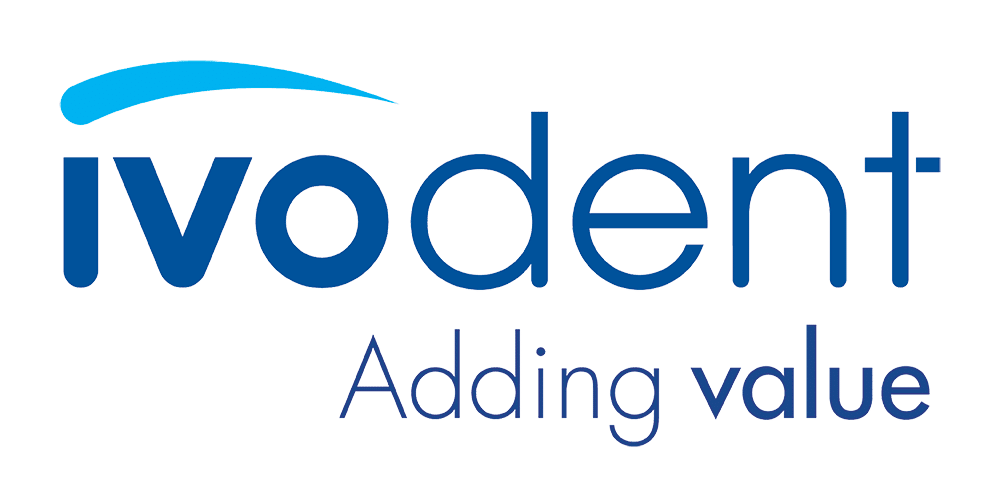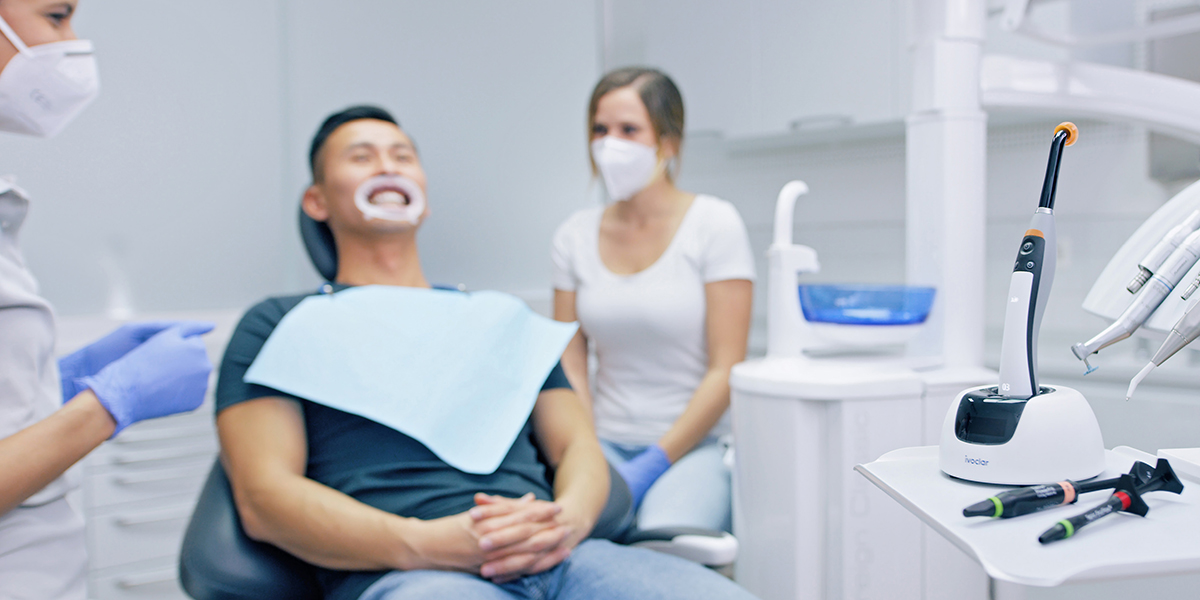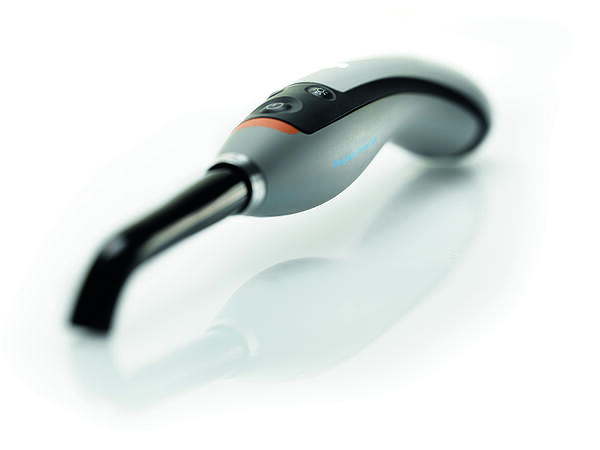

Is light polymerization a necessary evil or just a short, intermediate step? The Canadian dental clinician and researcher Richard Price at Dalhousie University in Halifax has spent the better part of the past few decades studying curing light technology. In an interview with Dental Tribune he shared his advice on how to light cure properly and explained why polymerization lights are so important for the success of your dental office.
Dr. Price, you have been instrumental in researching curing light technologies. Would you mind sharing your thoughts about compromised polymerization and its potential effects on clinical success?
Thank you for this opportunity to discuss the importance of using a good curing light to prevent undercuring dental resins. The problem as I see it is that most dentists were never taught much about the importance of proper light curing, or what to look for in a good curing light. Even the cheapest light and the sloppiest technique will produce a resin restoration that is hard to touch with an explorer. The problem is that the dentist cannot determine whether the bottom or the inside of the composite restoration has been adequately cured. An under-cured restoration is weaker and more prone to fracture, the bond strength to the tooth is reduced or even non-existent, post-operative sensitivity occurs, the color stability of the resin is compromised, and more chemicals are released into the body from the partially cured resin. These are all very undesirable outcomes of inadequate light curing, and none of them need to occur.
What should dental professionals consider key attributes of curing lights?
Curing lights are defined as medical devices and only approved medical devices should be used on patients. If we look at Ivoclar Vivadent’s curing lights, they are not only approved medical devices, but they are also functional, ergonomic, reliable, and thoroughly tested according to international standards. Furthermore, the broad emission spectrum of Bluephase lights means that they will cure all known dental resins and bonding systems.
Which key attributes of the Bluephase PowerCure will clinicians find helpful?
In addition to the new Polyvision technology, the light's high power and irradiance can cure both direct and indirect resin restorations. Depending on the thickness of the indirect restoration, the light can photocure the resin cement used to bond most indirect restorations to the tooth. I like to use several exposures using the Turbo or the 3s settings to photopolymerize the resin under my indirect restorations and the regular high output settings for my direct resin restorations.
The patented Polyvision technology has been described as an inbuilt personal polymerization assistant. How does it work?
The Polyvision feature should help clinicians achieve reliable curing results by automatically detecting if the light tip moves away from the tooth when the curing light is on. Polyvision alerts the operator using vibration or an acoustic signal if it detects movement. Then, depending on how far the light tip moves away from the tooth, it will automatically increase or even stop the light-curing cycle.

Your research shows the importance of uniform beam profile and irradiance. Why is this an important factor to consider?
Ivoclar Vivadent recognizes that the success of its resin-based products depends on them being adequately light cured. Suppose the curing light delivers hot spots of high irradiance and regions of low irradiance. In that case, the composite will not be uniformly and evenly cured. It is like baking a cake in an oven that does not provide even heating. The cake cooks, but not evenly. The current range of Bluephase lights delivers an exceptionally uniform light output and uniform irradiance across the light tip so that the composite is evenly cured.
Should dentists regularly measure the light output from their curing lights, and is a built-in radiometer helpful?
Manufacturers will often sell their light based on a claim that it delivers a high irradiance. The light may indeed deliver a high irradiance, but the power output from the light may be rather low. So how can a high irradiance light also be a low power light?
The reason is how the international standards report the irradiance from the light. In the standard, the total power from the light is first measured. This power is then divided by the area of the light tip to provide the irradiance. This means that to deliver the same irradiance, a light with a 7 mm diameter light tip need only produce half the power of a light with a 10 mm diameter light tip (because the area of a 7 mm diameter tip is half that of a 10 mm tip). In addition, this method provides a single irradiance value that is only an averaged value across the tip; however, because many lights have a poor beam profile, there are often hot spots of high irradiance and areas where the irradiance is rather low across the light tip. I see this all the time in budget lights, and this is completely missed in the international standard that only reports a single averaged irradiance value.
Certain models of Bluephase lights also include a radiometer in the charging base. This integrated tester makes it easy to test the light every day. I know that may seem unnecessary to some, but if you only test your light once a week or once a month, what will you do when the light fails the test, because it will fail at some point? Are you going to recall and redo, at no cost, all the restorations you placed since the last successful test? The solution is to test the light every day, and Ivoclar Vivadent makes this an easy thing to do.
Can you please advise on the correct polymerization technique for dental professionals?
When light-curing, I recommend the following steps:
Do you have any other tips to consider during polymerization that will help clinicians in their light-curing?
For Class II situations, I also cure from the buccal and lingual aspects after removing the matrix band.
I use the same technique for indirect restorations, but I usually use a tacking tip first, clean up the excess cement and then light cure with the tip in contact with the indirect restoration.
Only disinfect the light using the manufacturer’s recommended disinfectant. Some disinfectants can damage the light. Read the instructions to find out what you can safely use on the light.
Check that the end of the curing light tip is clean and has no chips, cracks, or cured resin on it. Using a barrier over the light helps with infection control and prevents resins from bonding to the light. However, when there is an infection control barrier over the light tip of the Bluephase PowerCure, and G4 light, the best option is to use two hands and make sure that the light tip covers the restoration. Watch what you are doing with that light tip.
By Dr Jennifer Bell

One of the biggest challenges with completing clear aligner tooth movement predictably is accomplishing enough interproximal reduction (IPR) on schedule to allow for ideal tooth movement. Many clear aligner cases call for IPR to be accomplished to best level and align teeth. I tend to prefer buccal expansion wherever possible to not only allow for better alignment of teeth but to also allow for improved tongue positioning, reduced buccal corridors, and more ideal occlusal forces on posterior teeth. While buccal expansion has many advantages for patients and continues to be my preference, many cases still require some IPR for best completion. Since IPR is an unavoidable part of orthodontic therapy, it is important to find a more predictable protocol to achieve these results.
When IPR is done well and accurately, tooth movement is more likely to move on schedule and the case is likely to complete on time with fewer numbers of refinements (additional series of trays) required. Profitable clear aligner tooth movement begins with implementing systems that work for reducing the number of visits required or additional aligners needed to complete the case. For my clear aligner patients, I have found a very predictable process using both Garrison IPR hand files and Strauss Diamond rotary IPR discs.
Our patient featured in this article presented with a chief concern of improving the esthetics of her smile and reducing her overbite and overjet for more ideal anterior tooth placement. She has a posterior implant which constricts the amount of buccal expansion we can accomplish so in this particular case, we elected to add some IPR to accomplish her tooth movements. As shown in Fig 1, she had some existing space (green boxes) on the left pre-operative image and required IPR (gray diamonds) in right ClinCheck image to improve midline and position of anterior teeth. Upon delivery of clear aligners to the patient, we will try to complete all necessary IPR at the initial appointment. Of course, there are times when it is more ideal to wait for some movement first before attempting IPR to achieve better access to the interproximal walls. In addition, accomplishing most of the required IPR at the initial visit will increase the accuracy of the reduction. Once teeth are activated for movement, their mobility increases, and it becomes more difficult to determine if the correct amount of reduction has been completed.

Our first step in our IPR protocol is to break all the contacts with the FitStrip Gray 0.05mm (Fig 2) to break open contacts. Reduction between teeth is then accomplished in a step wise fashion starting with the smallest FitStrip and moving towards thicker strips in order to slowly increase the spacing between teeth. In this case, we used the double sided FitStrip Extra Fine Grit Yellow 0.11mm (Fig 3) and Red 0.15mm (Fig 4) in a fine grit. Clinicians can use a TAC topical anesthetic if needed to get the accurate reduction. Hemorrhage is expected with gingival tissue, but patients rarely complain of any discomfort with the reduction when slow, methodical movements are utilized in a controlled fashion. It is also important to note the IPR strip should be tight in the holder which can be adjusted by the colored portion of the handle.

For spaces larger than 0.15mm, the clinician has a choice to decide if they wish to complete the required IPR with hand instruments like the FitStrip or move to rotary instruments or high-speed burs. Hand instrumentation with the FitStrips can also be accomplished if the clinician does not want to utilize rotary instrumentation. FitStrips are available in either a single sided or double sided option and can range in size from 0.08mm to 0.5mm. Clinicians should also note the grit transitions from super fine to medium as the thickness of the strip also increases (Figs 5 and 6). Clinicians can avoid potential hand fatigue with hand instrumentation by utilizing the handle provided in the starter kit. (Fig7) I find that I will alternate using the handle attached to the FitStrips depending on the angulation of the required spacing and my ability to negotiate the reduction safely for the patient’s surrounding tissues and lips.
After reduction is completed per the provided instructions from the clear aligner company, I often go back to the spaces once more with the appropriately sized FitStrip double sided hand instrument to make finishing adjustments and smooth any sharp angles that have resulted from the reduction. A clinician can also use the FitStrip fine grit in 0.15mm to smooth the interproximal sides of the teeth to allow for more ideal approximation during movement. Finally, verify the reduction is completed adequately by using appropriately sized gauge which should slide between the teeth passively indicating the correct reduction has been made. (Fig8). This process is repeated as needed throughout the case in specified intervals depending on the orthodontic plan.
Garrison’s FitStrip system has several advantages over other IPR systems on the market today. Their strips are autoclavable and designed to be used for 20-30 spaces (or approximately 4-6 cases). Our office will take the IPR strips after autoclaving and store them with that patient’s case file. This allows us to continue to use their designated strips throughout their treatment decreasing our overhead on IPR consumables. The FitStrips can also be used to break contacts when cementing veneers and to finish proximal boxes with Class II composites. The ergonomic design of the handle to aid in handling the FitStrip is yet another advantage this system has over many other IPR strips I have tried in my practice.
Protocol Synopsis:
1) FitStrip Gray 0.05mm to break contact
2) FitStrip Yellow 0.11mm and Red 0.15mm double sided
3) FitStrip Blue/Green/Black to finish reduction with hand instruments OR
4) Rotary IPR system to open contacts by 0.2mm-0.5mm
5) FitStrip of appropriate size for reduction to finish the spacing
6) FitStrip IPR gauge to ensure reduction is complete
7) FitStrip Yellow fine grit to smooth the spaces
About the Author
Dr Jennifer Bell is an innovative and fresh voice in the world of dentistry. North Carolinian by birth, with her doctorate from the University of North Carolina, she currently practices in Raleigh NC where she lives with her husband and three children. She introduces a forward thinking perspective to digital innovation, practice management, team building, and leadership development through an engaging and interactive style. Dr Bell is a frequent contributor to leading dental publications, speaks on a variety of relevant and timely topics, and co-hosts a popular, weekly dental industry podcast. Global providers of dental technology, materials, equipment, and other critical services rely on Dr. Bell's input and feedback on new product introductions, marketing strategy, and industry education. She has served as an Advisor, Key Opinion Leader (KOL), and Educator for notable brands like Align Technologies, Benco Dental, Vista Apex, Garrison Dental, and more. She is active in the Academy of General Dentistry, serving on the Dental Practice Council, Government Evaluation and Review Committee and as a national spokesperson. Dr Bell is a valued and highly regarded expert in the field of dentistry.

How long have you been using Sagemax?
I started using Sagemax about three years ago, for as long as Ivodent has been distributor for it here in South Africa.
With regards to colour how true do you find Sagemax?
I would say it’s one of the nearest matching to shade guide colours - about 90-95% true!
Many of the competitors seem to be a little on the bright side how does Sagemax compare?
Sagemax is not bright at all, nowhere near as bright as all the other competitor products.
When looking at milling margin quality and chipping are you happy with Sagemax?
I am very happy indeed and have experienced no chipping problems at all with it!
Have you had many crowns fracture?
I have had the odd one but nowhere near as many as other materials at all.
Does the fact that Sagemax is multilayer give you the option to do full contour anterior restorations or do you do micro layering?
I do both – it depends on each individual case. I either leave as full contour or for extra vitality will go with micro layers.
Does the fact that many of your crowns are full contour save you bench time?
Absolutely – this saves me bench time big time!
Thys tells me he has given you a Sagemax Nexx ZRT to experiment with, how does it compare to the Nexx ZR+?
I actually have not used it yet but I believe it is brighter – I hope to try it out soon! And look forward to it.
Do you need to do micro layering or is the full contour millings sufficient for anteriors? And in the posterior region?
This is case dependant – with multi units I can get away with full contour but for individual aesthetic results then I do micro layering – it’s also shade dependent. For a complicated case with individual Multiple units I can do full contour.
How does the price of Sagemax compare to the competitors?
Sagemax is extremely fairly priced and looking at price vs finished quality - far supersedes the price. One would expect to pay more actually!
Would you recommend Sagemax to your colleagues?
Yes absolutely, I highly recommend it all the time!
Michael Lazarevic purchased Sagemax NexxZr+ Multi from Ivodent.

We believe this is your first milling unit for Inline Dental?
Yes this is the first milling unit we've purchased for Inline Dental.
It's been on the cards for a while and we were comparing different systems for quite some time but eventually settled for the 3 Shape E2 scanner and Ivoclar PrograMill Dry milling machine.
How is it going, are you happy with the results?
I'll be honest. In the beginning it was extremely tough because I've had to learn everything from scratch. Gary and his team consisting of Thys, Johan, Werner and Devon were very helpful getting us off the ground and it's a relief to know that they are literally just a phone call away. I've had to contact some of them after working hours and they'll ALWAYS reply and assist. It might not be immediately, but they do reply and my issues were resolved.
The results are amazing! It may have been a bit challenging because of lack of experience, but once you get your brain wrapped around the way the system works, you can definitely achieve very good results, especially with the Prime and Sagemax material.
Is the whole digital experience and workflow, making you feel like you are in a different league?
Digital dentistry allows you to offer something different to your clients in a positive way and yes, the work flow becomes easier and quicker the more you get to know the system and when and how to tweak things. This is definitely the way the industry is going and it's a breath of fresh air knowing we are able to offer this to our clients. It also allows you to turn around work quicker.
Are you seeing improved productivity yet - saving you bench time?
Improved productivity can only happen the more you sit and work with the system. In the beginning it was extremely hard but with the help of your team, using built-in tutorials and YouTube videos, we were able to iron out the issues we had and eventually get to where we are today. There's always room for improvement but that's exactly how technology works - lol!
Are you enjoying the Prime Zirconia – are you happy with the shades and results you are getting?
Just like any other digital lab we've tried out different materials but nothing comes close to the results we've achieved using the Zirconia Prime material. Shades are spot on and with it being a multi layered material we were able to mill big cases to full contour with amazing results.
Sagemax – have you tried it yet? Any feedback for us?
We've tried the Sagemax as well, also with good results. It's not as good as the Prime but very close in my opinion. Material after sintering seems to be a bit lighter than what is required but with a little bit of tweaking with staining and glazing we are able to get the desired results.
Around 70% of the work we do is with Dr Haffajee and his positive comments speak for themselves. He is very happy with the results! To date we have yet to receive any negative feedback from our clients.
For more details on the Ivoclar PrograMill Dry milling machine click here.

Are you enjoying the workflow with PM7?
It’s absolutely fantastic, I am enjoying it very much and everything is working really well! So I am a happy chappy!
We hear you are working with implant bars with an overdenture – tell us about that and your experience with it – was the dentist and patient happy?
Yes we are doing this with huge success and our dentists and patients are delighted.
Are you enjoying working with Prime Zirconia – are you happy with the shades and results you are getting?
We are loving the colour of Prime - it’s spot on! And what is really exciting is that with Prime we are able to mill the margin far thinner with no chipping, and this is a huge time saver in final finishing…
We see you have been busy with titanium bridges – how did those turn out and are you happy?
Let’s just say we are still playing around with it!
Is the PM7 saving you bench time? Do you see it as a time saver?
Yes absolutely – it’s a huge time saver!
We also believe you are doing prosthodontics. How is Ivotion working for you? Have you made a digital denture using the Ivotion system yet?
We are really excited about this and are getting the design right, although I do need some help with the nesting. I am looking forward to more training on this with Johan, upon his return from Ivoclar.
Click here for product information on the PM7.


Tell us about your favourite case using e.max?
It's difficult to speak about one, I am working on so many at the moment and each one of them has such different indicators. Some are tabletop, some simple single inlays, some onlays and single crowns, and a full case of veneers. Actually that pretty much sums up the versatility of e.max. I won’t call it multi-purpose though, as this can perhaps minimise its amazing, focused, capabilities. I feel you only appreciate the real beauty of e.max once you learn to understand the material, and how it is able to perform optimally in a multitude of scenarios. So I think that's pretty much my simple take home from it.
How long have you been using e.max?
From about 2015, when I initially became aware of e.max. Many dentists out there like to talk about ‘recreating nature’ and say how ‘good it is for the body and the health and all of that’, but for me, from a clinical perspective, it's really only the scientist in you that will appreciate e.max in itself. Patients are usually unaware of what's going into their mouths – whether we cement or bond a crown.
We want it to be aesthetically pleasing, but a patient is never aware of the tensile strength, or the coefficient of thermal expansion and all of those amazing things that e.max brings with it. In terms of my experience on a clinical level, I've been incredibly happy with it and for the options it offers. Especially when it comes to anterior work, you're looking at a multitude of different scenarios that need the right material to perform different functions to create the ideal aesthetics, from blocking out, translucency and colour enhancing and matching etc., and from that aspect, I think e.max is amazing!
But the real beauty for me in e.max, and why I choose it, is because it comes with a good track record, is scientifically backed, and for all the biomimetic aspects that it offers… and that is the e.max message that I would like to emphasise from an education standpoint, to patients as well as other clinicians.
It’s crazy that there are labs out there that will use a cheaper block, knowing that it won’t last like e.max does, but it’s cheaper so they choose that for their practice. In some cases that I have seen, a lab will display the e.max sticker, say it’s e.max, but it’s most definitely NOT e.max!
Patients (and their dentists) should not buy into consumerism and expect a crown to last five years (like an iron or microwave does). Only when you critically appraise your work on patients over long periods of time - 10 years, 15 years, 20 years, do you see the importance of using a product that you can trust to stand the test of time like e.max does!
With e.max, for me the beauty is not just in the colour, but in the material science behind it. I would like to share this with other dentists and make them aware of what some labs do; they shouldn’t just accept what they get from their labs – labs should be governed by what we dictate to them! A lab slip should be like a prescription, and stuck to, with no derivative offered or considered! Too many clinicians are being duped into believing they're using e.max. They need to be aware - they owe it to the consumer too! I would like to think that Ivodent could somehow involve the council and get on top of this unethical marketing practise. It’s a big problem, because in essence, the product is being marketed, but not delivered.
Don’t get me started on how I feel about how many poor quality dentists out there are making more money than the really good ones, purely because they move the goalposts and think about the bottom line before longevity in their work. Maybe you need to do more lectures based on material – yes it's not the best lecture, it's a boring topic to talk on, but we need to find an exciting way of getting this message out there.
I also think we're speaking implants too often, but we're not speaking about what's happening in between. And I see the same thing with digital dentistry. There are so many guys talking about digital dentistry and how cool it is and the wonderful offering it is. But when you actually sit down with those guys and ask them, ‘so what are you doing?’ Their response is unsatisfactory. They're simply sending a scan to the laboratory and the laboratory gives them 3D printed models. They have no concept of the process, quality, or expected longevity of the product that they are supplying their patient and which is unquestioningly accepted by the patient.
It's exactly the same with e.max and I think more engagement needs to happen in some sort of a fun, but a relatable way.
Have consumers become more aware and more demanding of quality product materials?
Sure they expect and demand the best long lasting product from you, but they are not really aware how long things should actually last! A crown breaking after 2years - yes they get angry, but after 3yrs they accept it, when they should expect 10years!
I have only been in private practice for two years, so fortunately, I haven't had any of those issues. But I am seeing and fixing patients presenting with other dentists’ issues - I've seen patients come to me who had rehabs done five years ago, and they sit in the chair and they know they're going to pay for it again. And in my head I'm thinking, this is legally not right – but they accept it. I think I would like to see at least 50 percent of my patients being more educated about what they are paying for and what they should expect. It's like they just want a wide smile. Patients are coming to me wanting veneers and crowns done, and I have to educate them that doing less is more. Patients need to be told when doing nothing is better than doing something. They are ill-advised that doing veneers is the best option for protecting their teeth, because even such ‘minimal’ treatment is still invasive and attaches a certain longevity to the tooth. They should be made aware of options available so they can make informed decisions. But yeah, I think we need to educate on the material itself, and it doesn't help to do this when they come to the practice, because I'd like to believe that patients who come to my practice are already the converted and the informed. They come because they have confidence that they will receive quality treatment, or will soon realise, once they are engaged and included in decision-making. I want patients to ask me about material quality and ask ‘what is e.max’. Ask me ‘why do I need a crown over a veneer’, or ‘why do I need a veneer or a crown?’ ‘Or can I have this instead’, etc? Those are good conversations. Yes, I'm seeing more and more patients asking things like that because patients are Googling crowns and veneers, which is incredible, and I love it. But I think we need to get them asking material questions from an implant perspective. The market for implants is smaller, so it's easier to get information out there.
So yes, patients are definitely more aware of what they're putting inside their bodies. I do enjoy educating the patient in my chair so that if they have a family member or a friend who needs the same experience, at least they can speak knowledgeably.
I do love that every step of the way, e.max eliminates stress for me. There's no guessing. I don't think there's any other system in the market that allows us that much predictability from a clinical perspective, predictability both short term and long term. But again, all of this, you guys know already!
Click here for product information on e.max.